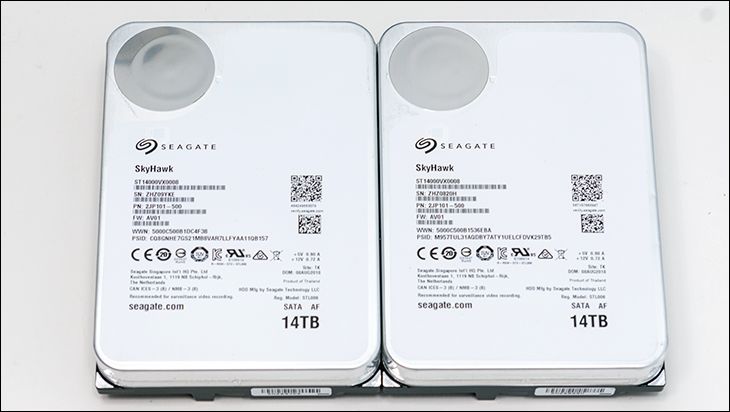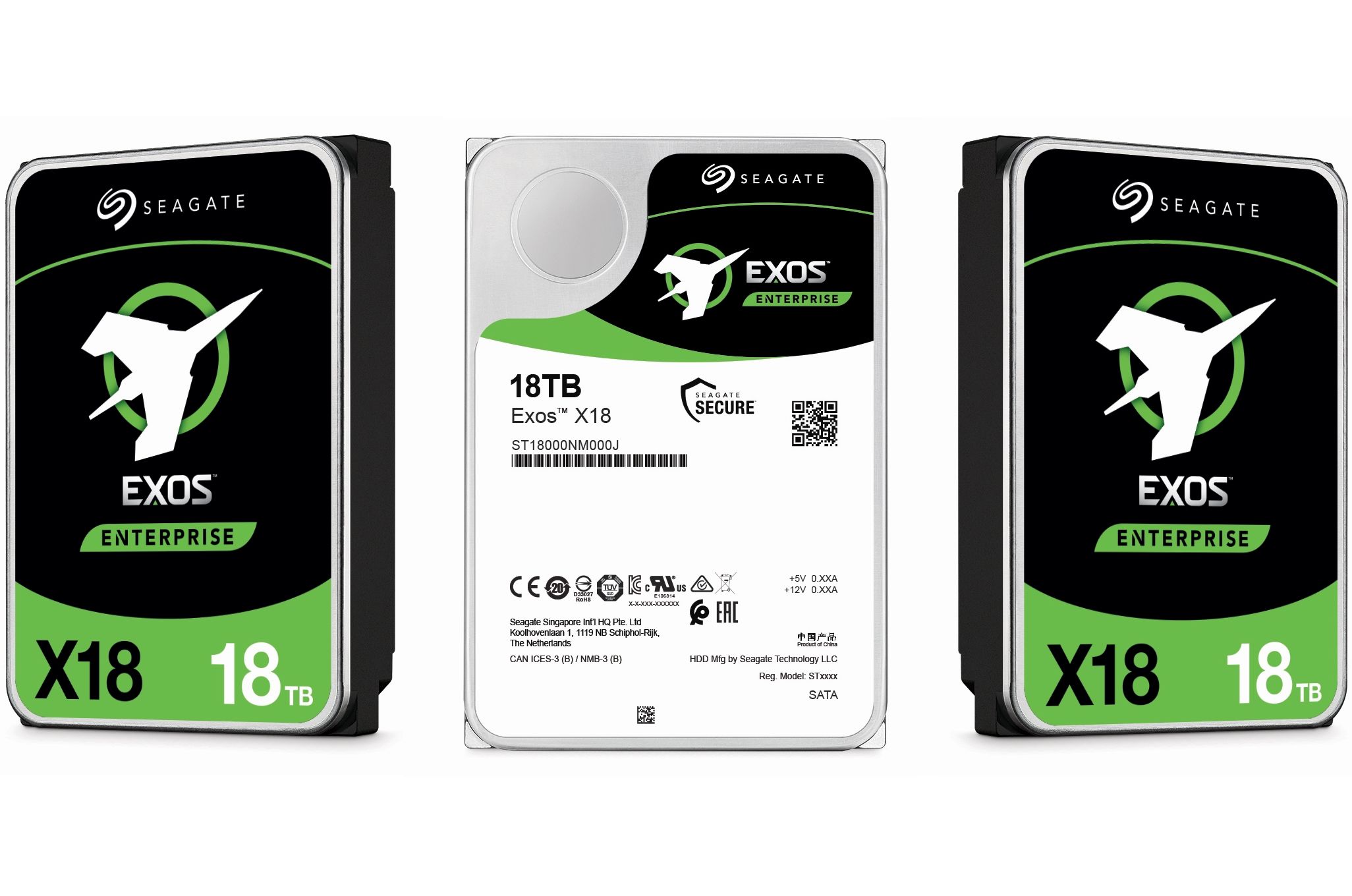To investigate the impact has on overall performance we have used a slightly modified version of our previous IOMeter test. Instead of doing one-lump sum results we have taken a different approach. This time we will be running two separate tests. The first is sequential write performance at a queue depth of 1. The second is a sequential read performance at a queue depth of one. Each test is run for ten minutes and each cycle is repeated four times. The averages for each data point are used.
In each chart we have included both passive and actively cooled performance results. The passive is with M.2 installed in open test bed with no cooling and underneath a large (and hot running) video card. The active is the same M.2 but with it installed in a PCIe adapter card w/ heatsink and active cooling via a 120mm fan. This represents worst and best case scenarios, with most systems falling somewhere in the middle of these two extremes.
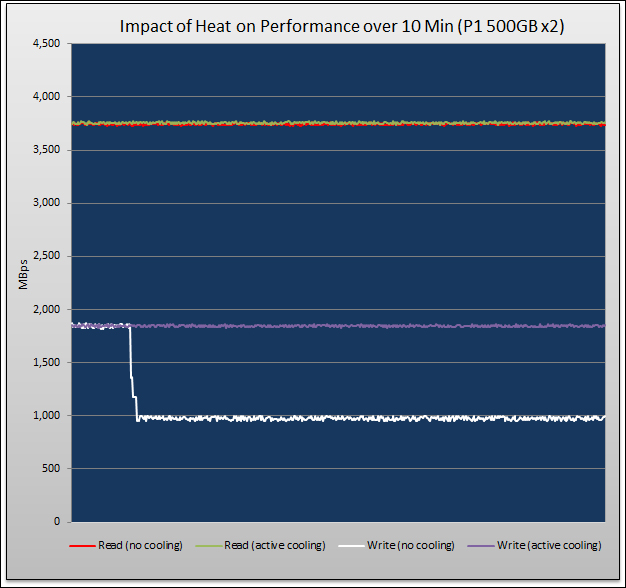
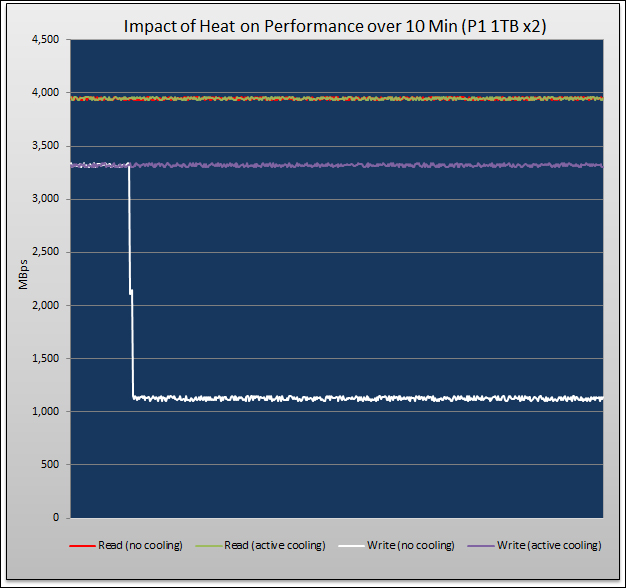
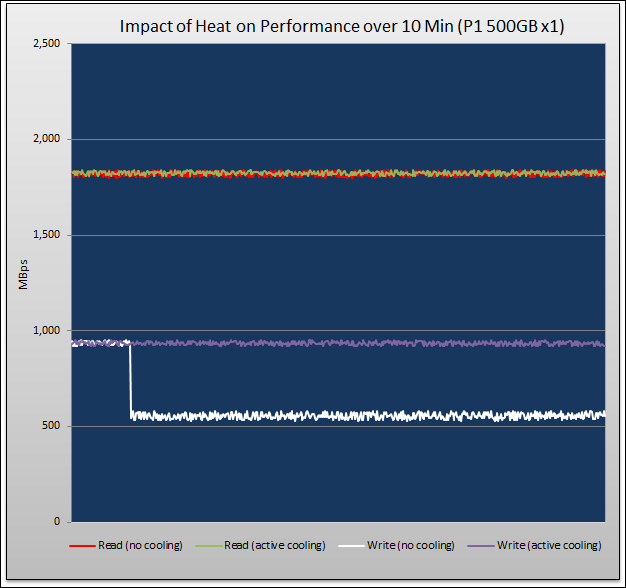
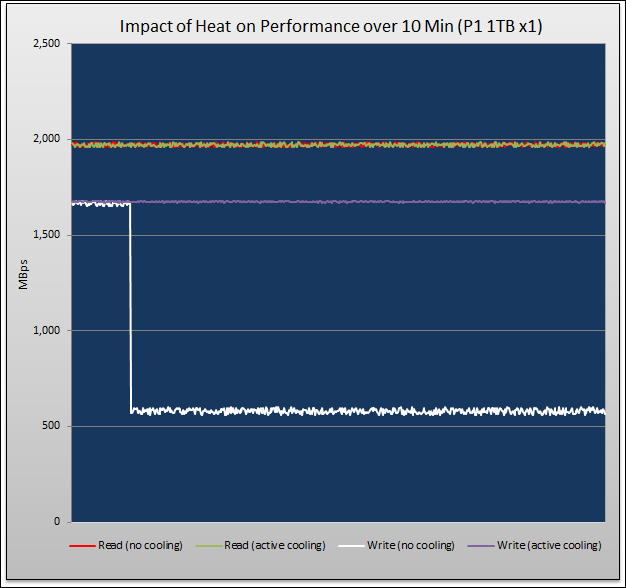
As you can see both drives have excellent read performance even under… ‘adverse conditions’. The same is not true of write performance. Basically, once the controller senses temperatures of about 60-degrees Celsius it throttles performance down to essentially SATA levels. Diving down a bit deeper the 500GB is slower in read and write performance… and in and out of throttled conditions. The variance is also a touch greater with a less ‘clean’ line. This is because the 500GB is working hard with less pSLC buffer, less RAM, and generally less everything. We doubt many would notice a difference but there is one. Of course, if you were to double the number of drives the overall performance – even in throttled mode – is also doubled. What this means is two 500GB capacity P1 drives would be much better than one 1TB if your system is not optimally configured for keeping M.2 drives cool. I.E. Same price, much better performance.





